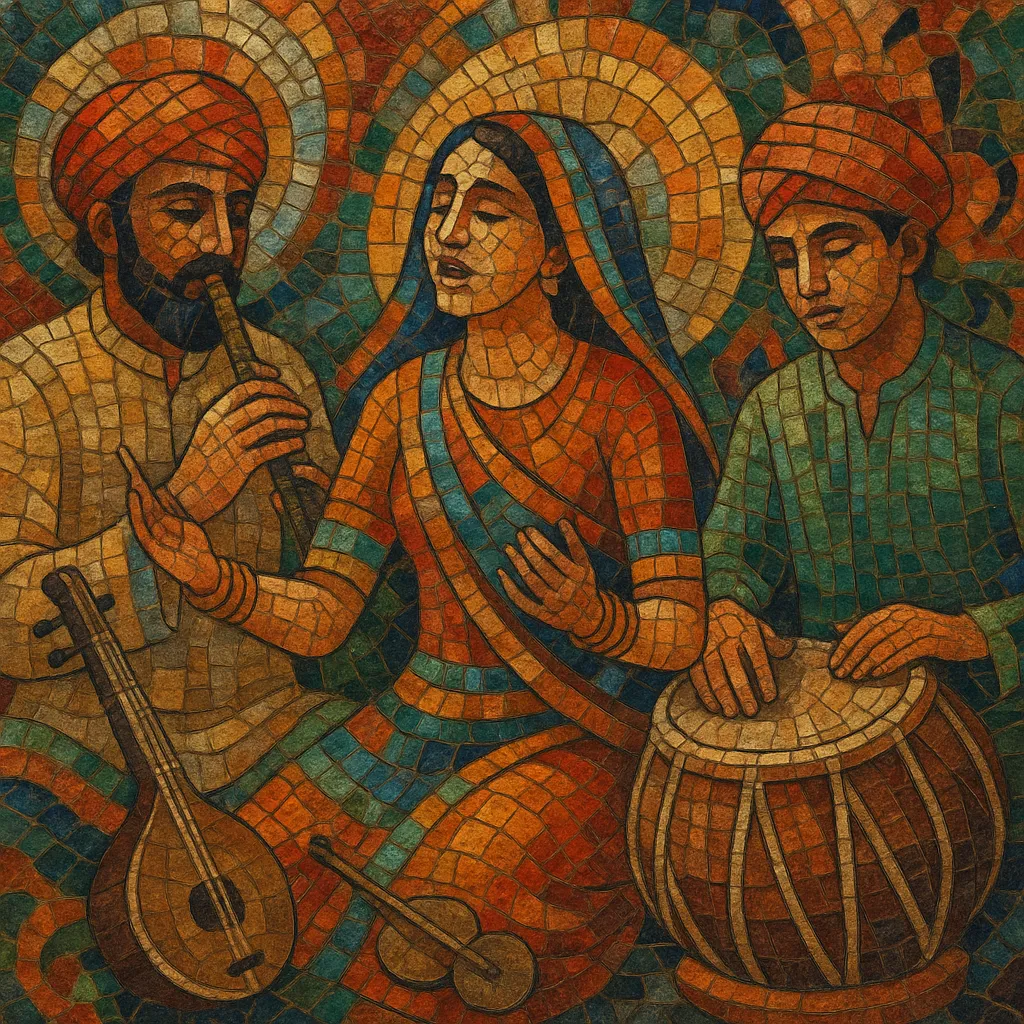Gujarati folk music is the traditional music of Gujarat, a western Indian state whose coastal trade routes and devotional movements shaped a distinctive sound. It spans lively communal dance songs such as garba and dandiya raas, narrative dayro storytelling, temple and household bhajans, Sufi-influenced pieces in certain communities, and songs embedded in folk theatre like Bhavai.
Musically, it favors raga-informed melodies sung in Gujarati (and Kutchi), cyclical rhythmic patterns, and participatory forms such as call-and-response and clapped “taali” patterns. Typical instruments include dhol, dholak, nagada, tabla, manjira/jhanjh (cymbals), shehnai, flute (including the double flute jodia pava), harmonium, and folk strings; in modern urban settings these are often combined with keyboards, guitars, and drum kits. The style thrives at Navratri festivals, village melas, weddings, and devotional gatherings, where music functions as social glue, spiritual expression, and communal celebration.
Gujarati folk music grew alongside the Bhakti movement and the region’s folk theatre and bardic traditions. Poet-saints such as Narsinh Mehta (15th century) authored devotional verse that circulated orally and seeded a vast bhajan repertory. Parallel streams included Charan and Gadhvi bardic singing, Bhavai folk theatre with satirical songs, and seasonal women’s circle-songs that later crystallized as garba.
Across the early modern period, village ensembles used dhol, nagada, manjira, shehnai, and voice to accompany communal rituals. Two complementary devotional strands took root: Vaishnav bhajans (Krishna-centric) and Shakti worship (Ambe Maa) that became central to Navratri’s garba/dandiya. In Kutch and coastal Gujarat, double-flute (jodia pava) melodies and Sidi community practices added timbral and rhythmic variety; Shi’a marasiya lament traditions also contributed distinctive modal and lyrical colors.
With gramophone records, All India Radio, and state cultural academies, folk performers and dayro storytellers reached wider audiences. Artists systematized rhythmic cycles (Keherwa, Dadra) and adapted raga frameworks to community dance and narrative forms. Folk troupes toured cities, and film studios occasionally folded Gujarati folk idioms into Hindi and Gujarati cinema.
From the 1990s onward, massive Navratri events in Ahmedabad, Vadodara, and the Gujarati diaspora (UK, USA, East Africa) amplified the genre’s profile. Orchestral garba bands and DJs blended folk percussion with electric bass, keyboards, and pop hooks. Today, Gujarati folk coexists as both a living village practice and a modern stage genre influencing film songs, indie pop, and electronic garba productions while retaining its participatory, community-first character.


